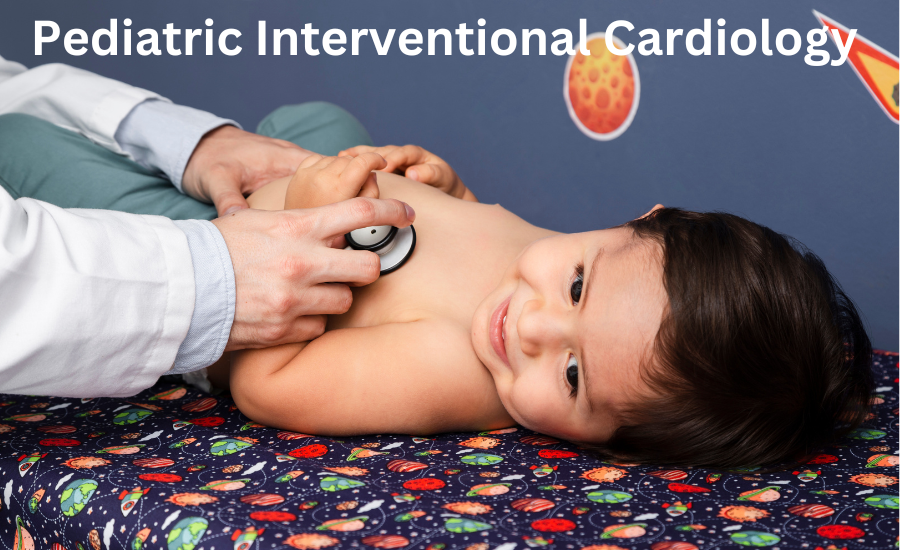
Pediatric Interventional Cardiology Market Overview
The Pediatric Interventional Cardiology Market is poised to witness a significant growth rate of around 6–8% during the forecast period. The market expansion is driven by the increasing prevalence of congenital heart diseases among children, rapid technological innovations in catheter-based therapies, and the growing preference for minimally invasive treatment options. Additionally, favorable government initiatives aimed at improving pediatric healthcare infrastructure, combined with rising healthcare expenditure and continuous R&D investments, are further stimulating market growth.
Key Request a free sample copy or view report summary: https://meditechinsights.com/pediatric-interventional-cardiology-market/request-sample/
Pediatric interventional cardiology has emerged as a specialized field that integrates pediatric cardiology with interventional techniques to diagnose and treat heart defects in infants, children, and adolescents. This approach emphasizes minimally invasive catheter-based procedures, which enable physicians to repair or correct cardiac abnormalities without resorting to open-heart surgery, thereby minimizing complications, recovery time, and hospital stay.
Advancements in Minimally Invasive Techniques Transform Pediatric Cardiology
The field of pediatric interventional cardiology is undergoing rapid transformation with the adoption of minimally invasive procedures such as catheter-based interventions for congenital heart defects, valve disorders, and vascular abnormalities. These techniques have revolutionized pediatric cardiac care by reducing surgical trauma, accelerating recovery, and improving overall patient outcomes. The use of procedures such as balloon angioplasty to expand narrowed vessels, stent placement to maintain vessel patency, and device closures for septal defects has significantly enhanced treatment precision and safety. Simultaneously, advanced imaging technologies including 3D echocardiography, cardiac MRI, and CT angiography are playing a critical role in guiding interventions, providing detailed anatomical visualization, and enabling personalized treatment planning. The integration of hybrid procedures that combine surgical and catheter-based techniques is enabling physicians to address increasingly complex cardiac conditions with higher success rates.
Innovations Driving Pediatric Cardiology: Imaging, Devices, and AI Integration
Continuous advancements in imaging systems and device miniaturization are expanding the scope of pediatric interventional cardiology. The trend toward transcatheter valve therapies, including transcatheter aortic valve replacement (TAVR) and transcatheter pulmonary valve replacement (TPVR), exemplifies the move toward minimally invasive alternatives with excellent procedural outcomes. These innovations are supported by next-generation imaging systems that offer real-time visualization and greater procedural accuracy. For instance, in January 2024, Philips announced the FDA 510(k) clearance of its X11-4t Mini 3D TEE transducer, designed to enhance comfort and reduce the need for anesthesia during pediatric procedures. Such innovations are transforming interventional practices by making them safer and more efficient for patients of all ages.
Technological Integration and Personalized Medicine Shape the Future of Pediatric Cardiology
The future of pediatric interventional cardiology is being shaped by the integration of advanced technologies, personalized treatment strategies, and innovations in biomaterials. The development of smaller, more flexible devices tailored for infants and neonates, along with bioresorbable stents and tissue-engineered implants, is expanding the range of available therapeutic options. Furthermore, the adoption of personalized medicine—where treatment plans are customized based on patient-specific anatomical and genetic profiles—is enhancing therapeutic outcomes and minimizing complications. Robotics and artificial intelligence (AI) are also emerging as transformative forces, enabling enhanced precision, reduced radiation exposure, and optimized procedural planning. AI-driven image analysis and predictive analytics are supporting clinicians in diagnosis, risk assessment, and treatment decision-making. Manufacturers are increasingly developing pediatric-specific delivery systems, occlusion devices, and catheter technologies to address the unique anatomical requirements of young patients. The adoption of telemedicine and remote monitoring solutions is bridging the accessibility gap, allowing expert pediatric cardiology consultations and device monitoring in remote or underserved regions.
Key Challenges in the Pediatric Interventional Cardiology Market
Despite remarkable progress, the pediatric interventional cardiology market faces notable challenges that constrain its growth potential. High procedure costs and limited reimbursement coverage create financial barriers for both hospitals and patients, particularly for newly developed interventions. Another key limitation is the shortage of pediatric-specific devices, as most existing cardiac devices are primarily designed for adult use and later adapted for pediatric applications. The shortage of trained pediatric interventional cardiologists further hampers widespread adoption, particularly in emerging economies. Additionally, regulatory complexities and clinical data requirements delay product approvals, slowing innovation cycles. To overcome these challenges, collaborative initiatives among healthcare providers, manufacturers, and regulatory authorities are essential to develop cost-effective solutions and expand device accessibility tailored for pediatric populations.
Regional Dynamics of the Pediatric Interventional Cardiology Market
The global pediatric interventional cardiology market displays strong regional diversity, shaped by variations in healthcare infrastructure, disease prevalence, and technological adoption. North America remains the dominant market, supported by robust healthcare systems, a high prevalence of congenital heart defects, and strong adoption of advanced interventional technologies. The United States leads the regional market owing to substantial research funding, well-established pediatric cardiac centers, and continuous product innovation. Europe follows closely, driven by favorable reimbursement frameworks, rising healthcare spending, and technological progress in imaging and catheter-based systems. The Asia-Pacific region is anticipated to register the fastest growth due to increasing awareness of pediatric cardiac care, improving healthcare access, and growing incidences of congenital heart conditions. Countries like China, India, and Japan are investing significantly in pediatric cardiac infrastructure and training, making them emerging hotspots for market expansion. Latin America and the Middle East & Africa are also witnessing steady growth, aided by international collaborations and government-led healthcare initiatives.
Competitive Landscape
The pediatric interventional cardiology market is moderately consolidated, with major global players such as Abbott, W.L. Gore & Associates, Boston Scientific Corporation, Edwards Lifesciences Corporation, Siemens Healthineers, NuMed Inc., B. Braun Melsungen AG, Cardinal Health, Medtronic, Agilent Technologies, Koninklijke Philips N.V., Terumo Medical Corporation, and F. Hoffmann-La Roche Ltd. These companies are focusing on developing miniaturized devices and leveraging imaging innovations to strengthen their pediatric cardiology portfolios.
Strategic Developments and Growth Initiatives
Market players are pursuing a mix of organic and inorganic strategies—including mergers, acquisitions, partnerships, and new product launches—to enhance their global presence. In December 2021, Edwards Lifesciences received FDA approval for the SAPIEN 3 transcatheter valve paired with the Alterra adaptive prestent, designed for patients with severe pulmonary regurgitation. This combination offers a tailored solution for congenital heart valve conditions by ensuring a stable landing zone and improved procedural success. Similarly, in June 2021, Abbott introduced the Amplatzer Piccolo™ Occluder, the first medical device suitable for implantation in infants as small as 700 grams, providing a breakthrough minimally invasive solution for patent ductus arteriosus (PDA) closure in premature newborns. These product innovations underscore the market’s focus on expanding treatment options for the youngest and most vulnerable patients.
Outlook and Conclusion
The pediatric interventional cardiology market is set to maintain robust growth momentum in the coming years, fueled by rising prevalence of congenital heart diseases, advancements in imaging and catheter technologies, and a clear shift toward minimally invasive and personalized care models. Ongoing technological integration, strategic collaborations among industry leaders, and supportive regulatory reforms are expected to further accelerate market adoption. With growing investments in R&D and enhanced accessibility to advanced treatment options, pediatric interventional cardiology is evolving into a cornerstone of modern pediatric cardiac care, promising improved outcomes and better quality of life for children worldwide.
Browse Report: https://meditechinsights.com/pediatric-interventional-cardiology-market/
About Medi-Tech Insights
Medi-Tech Insights is a healthcare-focused business research & insights firm. Our clients include Fortune 500 companies, blue-chip investors & hyper-growth start-ups. We have completed 100+ projects in Digital Health, Healthcare IT, Medical Technology, Medical Devices & Pharma Services in the areas of market assessments, due diligence, competitive intelligence, market sizing and forecasting, pricing analysis & go-to-market strategy. Our methodology includes rigorous secondary research combined with deep-dive interviews with industry-leading CXO, VPs, and key demand/supply side decision-makers.
Contact:
Ruta Halde
Associate, Medi-Tech Insights
+32 498 86 80 79

